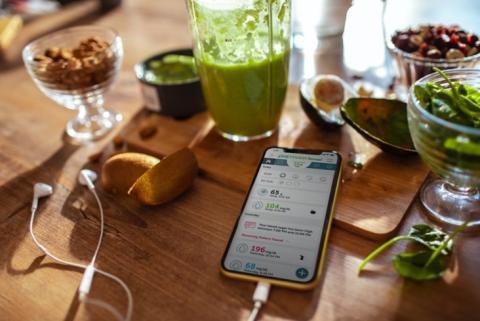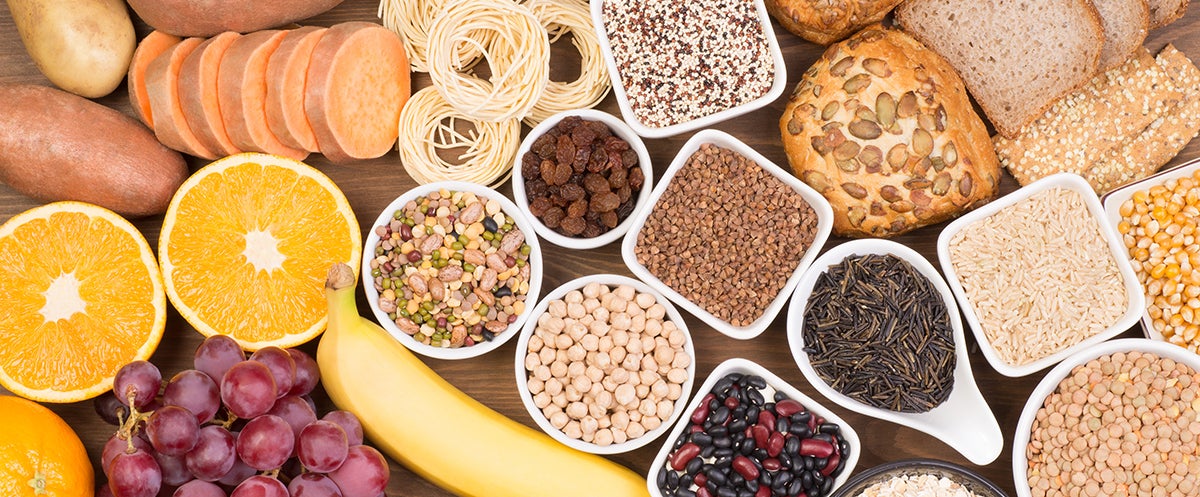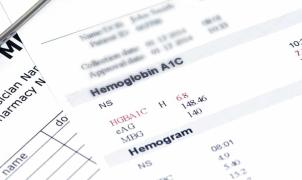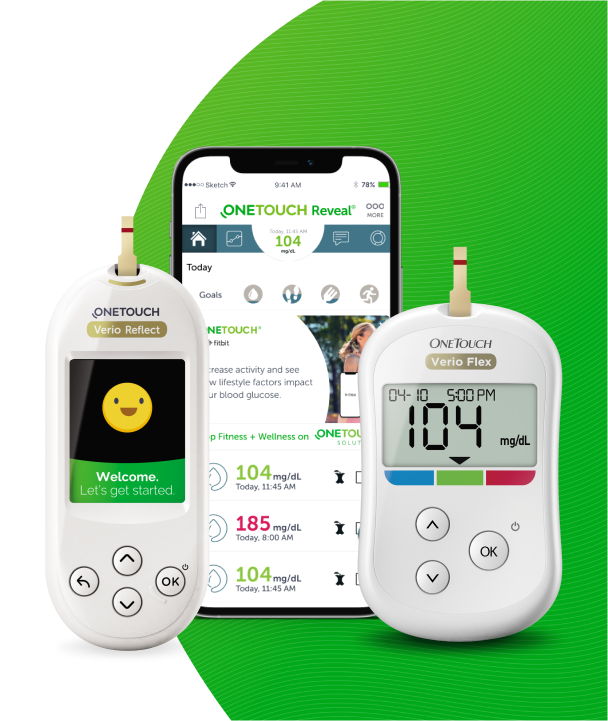Diabetes and Carbohydrates
By: Diana Isaacs, PharmD, BCPS, BCACP, BC-ADM, CDCES, FADCES, FCCP
Carbohydrates are one of the three food macronutrients (fat and protein being the other two). Each of the macronutrients, carbohydrates, fat, and protein, has a unique set of properties that influence health, but all provide a source of energy. When selecting carbohydrates, nutrient-dense ones are strongly preferred. Think whole grains, milk, yogurt, vegetables, and fruits instead of cookies, candies, soda, and fruit juices. Decreasing the number of total carbohydrates eaten can make it easier to manage blood sugars, but there is no one size fits all approach.
What is the role of carbohydrates in the body?
Carbohydrates are the body’s main energy source. During digestion, carbohydrates are broken down into simple sugars, which are then absorbed into the bloodstream. These sugars are converted into glucose in the liver and muscles and then become blood glucose (also called blood sugar). With the help of insulin, blood glucose enters the body’s cells to be used for energy. Extra glucose is stored in the liver and muscles or converted to fat.
Since carbohydrates are converted to sugar, they can affect blood sugar levels.
How many carbohydrates should a person with diabetes eat?
For people with diabetes, determining what and how much to eat can be challenging, as there is not a “one size fits all” approach. The recommended daily allowance (RDA) for carbohydrates is determined in part by the brain’s requirement for glucose and is a minimum of 130 grams per day in adults without diabetes. People with diabetes should eat about the same proportions of macronutrients as the general public, which includes 45% of calories from carbohydrates. Because total energy needs are determined by gender, height, weight, age, and physical activity levels, the number of calories a person needs to maintain their weight or lose weight will differ. Each gram of carbohydrate contains 4 calories, so an 1800 calorie meal plan would include around 200 grams of carbohydrates per day split between meals and snacks.
A variety of eating patterns, such as Mediterranean-style, vegetarian, low-fat or low-carbohydrate, can be used as a guide for diabetes management and should take personal preferences such as tradition, culture, religion, health goals, and cost, into account.
Until the evidence surrounding comparative benefits of different eating patterns in specific individuals strengthens, health care providers should focus on the key factors that are common among the patterns: Emphasizing non-starchy vegetables, minimizing added sugars and refined grains, and choosing whole foods over highly processed foods when possible.
Will eating too many carbohydrates or sugars cause diabetes?
Sugar is one form of carbohydrate. Although eating carbohydrates or sugar does not directly cause diabetes, eating too much food, including carbohydrates, can lead to weight gain, which is a risk factor for developing Type 2 diabetes. Additionally, consuming too many carbohydrates can contribute to high blood sugars. People who cut down on carbohydrates often find themselves more easily achieving their blood sugar targets.
What are healthy carbs to eat?

Carbohydrate intake should emphasize nutrient-dense carbohydrate sources that are high in fiber and minimally processed. Eating plans should emphasize non-starchy vegetables, fruits, and whole grains as well as dairy products like milk and yogurt, with minimal added sugars. A minimum of 14 grams of dietary fiber for every 1000 kcal is recommended with at least half of grain consumption coming from whole grains. Other sources of dietary fiber include non-starchy vegetables, avocados, fruits and berries, beans, peas, and lentils. Choose whole grains over processed foods and replace sugar-sweetened beverages with water as much as possible.
Examples of non-starchy vegetables include: salad greens, broccoli, cauliflower, cucumber, cabbage, radishes, broccoli, dark leafy greens, carrots, peppers, brussels sprouts, mushrooms, cabbage, eggplant, and asparagus. While all fruit contains fiber and nutrients, some are lower in carbohydrates than others. Fruits like watermelon, strawberries, blackberries, and cantaloupe are all great low-carb fruit choices.
When it comes to starchy vegetables, like corn and potatoes, the plate method of eating can help make them a part of a healthy meal plan. Half of the plate should be filled with non-starchy vegetables. One quarter of the plate can be filled with higher carbohydrate food like pasta, rice, corn, or potatoes and one quarter of the plate filled with a protein like meat, fish, tofu, or eggs. To reduce blood sugar spikes that can occur after consuming carbohydrates, it’s a good idea to eat them with a source of protein or healthy fat. Examples include an apple or crackers with peanut butter, a piece of toast with an egg, or Greek yogurt with berries and nuts.
Less preferred carbohydrate choices
Sweetened beverages, such as soda pops, juices, smoothies, and frappuccinos, should be avoided if possible and replaced with water or drinks made with sugar substitutes. Many people think fruit juices are healthy, but they raise the blood sugar quickly and lack fiber. For example, if craving apple juice or orange juice, choose an actual apple, orange, or peach instead. All contain dietary fiber and won’t spike the blood sugar as quickly. People are also less likely to over-indulge in whole fruits, whereas a person could find themselves drinking a glass of juice very quickly.
Dessert foods, like cookies, cakes, doughnuts, brownies, and candy, should be eaten only in moderation or replaced with nutrient-dense foods like fruits, vegetables, whole grains, milk, or yogurt. Many condiments, like ketchup, relish and barbeque sauce, are high in sugar and should be used sparingly.
In general, it is good to keep in mind that foods made primarily of protein or fats would not be expected to raise blood sugar.
How do you count carbs?
For people with diabetes who are prescribed a flexible insulin therapy program, education on how to estimate carbohydrate intake should be used to determine mealtime insulin dosing. For people using fixed insulin doses or taking other medications that can cause hypoglycemia, a consistent pattern of carbohydrate intake with respect to time and amount that also takes insulin action time into account can result in improved blood sugars and reduce the risk of hypoglycemia.
Carbohydrates are counted by looking at the total number of carbohydrates in a meal. Carbohydrates are listed on nutritional labels. The total includes sugars and other carbohydrate sources. Some people think sugar-free means carbohydrate-free, but that’s not always true. Sugar-free cookies and ice cream usually contain other carbohydrate sources. For example, a sugar-free cookie contains flour. It may also contain sugar alcohols. Sugar alcohols, such as mannitol, sorbitol, or xylitol, can impact blood sugar, although to a lesser extent than other carbohydrates. With carbohydrate counting, it is important to look at the size and number of servings in a package. You can determine how many servings you are having and multiply by the number of carbohydrates per serving. See this article for more on calculating serving sizes: Understanding how food affects your blood sugar
Nutrition labels are a great resource. If not available, many websites and mobile applications can help with carbohydrate counting. Many restaurants have nutrition information online. People trying to be very precise with carbohydrate counting could use a kitchen scale to weigh foods or measuring cups to determine exact serving sizes.
Mobile apps for carb counting and nutrition information:
- MyFitnessPal
- My Food-a-Pedia
- Carb Manager
- LifeSum Health App
- Yazio
- MyNetDiary
- Calorie King
- MyFoodAdvisor
- The USDA National Nutrient Database
Below is an example of how to count carbohydrates:
Toasted Oatmeal Flakes.
(Image Source: Amazon.com)
This food contains 23 grams of total carbohydrate for ¾ cup. If a person was eating 1 ½ cups, then the carbohydrates would be doubled to 46 grams of total carbohydrates (23g per serving x 2 servings). The 7 grams of sugars are already included in the total carbohydrate count. To get a more accurate carb count, a person would need to subtract the grams of fiber from the total carbohydrate count because fiber is not digested or absorbed. Subtracting 6 grams of fiber (3 g per serving x 2 servings) from 46 grams of total carbohydrates leaves 40 grams of net carbs. If a person eats this cereal with milk, they will need to add the carbohydrates from the milk to the carbohydrate count as well.
A guide to low carb meal plans for people with diabetes
Definitions of low carbohydrate meal plans vary. Very low carbohydrate is generally considered 20-50 grams of non-fiber carbohydrate per day to induce nutritional ketosis (where the body burns ketones for fuel). The key to low carbohydrate meal planning is to include nutrient-dense foods and incorporate lean meats, proteins, and plenty of non-starchy vegetables. The American Diabetes Association recommends that all people living with diabetes should have individualized medical nutrition therapy (MNT) by a registered dietitian nutritionist (RD/RDN) at diagnosis and as needed throughout their lifespan. This is especially important if following a very low carbohydrate meal plan, which may require additional nutritional supplements and lab monitoring to ensure electrolytes stay in range.
Sources:
Nutrition Basics. Washington State University. Accessed August 8, 2021.
Carbohydrates: How carbs fit into a healthy diet - Mayo Clinic. Accessed June 24, 2021.
Understanding Carbs | American Diabetes Association. Accessed June 24, 2021.
Evert AB, Dennison M, Gardner CD, et al. Nutrition therapy for adults with diabetes or prediabetes: a consensus report. Diabetes Care 2019;42:731–754 | Diabetes Care 2019 May; 42(5): 731-754. Accessed June 24, 2021.
Carbohydrates. Cleveland Clinic. Accessed August 2, 2021..
American Diabetes Association. 5. Facilitating behavior change and well-being to improve health outcomes: Standards of Medical Care in Diabetes—2021. Diabetes Care 2021;44(Suppl. 1):S53–S72. Accessed June 24, 2021.
Tasty Recipes for People with Diabetes and Their Families | CDC. Accessed August 2, 2021.
List of the Best Low-Carb Fruits and Vegetables | Healthline. Accessed August 2, 2021.
Diabetes Meal Planning | CDC. Accessed August 2, 2021.
Carb Counting and Diabetes | American Diabetes Association. Accessed August 2, 2021.
Counting Carbohydrates | Diabetes Teaching Center at University of California, San Francisco. Accessed August 2, 2021.
Counting Sugar Alcohols | Diabetes Teaching Center at University of California, San Francisco. Accessed August 2, 2021.
Beyond Type 2 | Calorie Counting Apps. Accessed June 24, 2021.
Diabetes Care and Education | American Dietetic Association | Ready, Set, Start Counting: How to
Use Carbohydrate Counting to Keep Your Blood Glucose Healthy. Accessed June 24, 2021.
US-OTB-2100043








